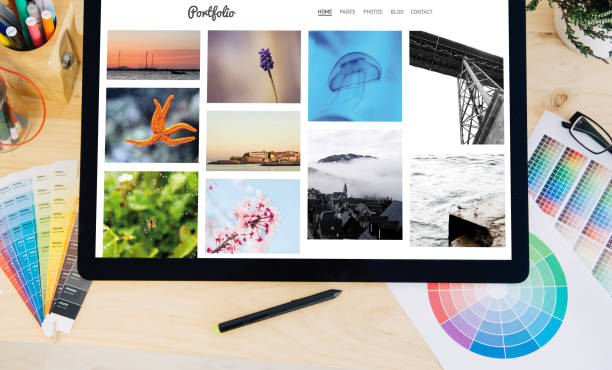How can you ensure you stand out? That’s a question many creatives have to ask themselves. When it comes to presenting your work, should you include it all? If not, how do you decide which pieces to choose?
In the creative industry, a portfolio is your passport to opportunities. Whether you’re a designer, writer, photographer, or artist, your portfolio is the tangible evidence of your skills, experiences, and creativity. It’s the first thing potential clients or employers will look at to gauge your suitability for a project or position. So, it’s important to know what to include.
Diverse range of work
Your portfolio should showcase a diverse range of your best work. Include projects that highlight your versatility and expertise across different styles, mediums, and techniques. Whether it’s graphic design, web development, writing samples, or photography, ensure there’s variety to demonstrate your proficiency in various areas.
High-quality samples
Quality is paramount. Only include work that represents your best efforts and demonstrates your skills effectively. Choose pieces that are visually appealing, well-executed, and showcase your creativity and attention to detail. If necessary, consider updating or refining older pieces to ensure they meet your current standards.
Relevant projects
Tailor your portfolio to the audience you’re targeting. If you’re applying for a specific job or pitching to a particular client, include projects that are relevant to their industry or requirements. This shows that you understand their needs and have the experience to meet them effectively. Displaying what might interest them is the best way to hook them.
Clear organisation and navigation
Make sure your portfolio is well-organised and easy to navigate. Group similar projects together, and provide clear titles, descriptions, and context for each piece. Consider creating separate sections or categories to showcase different types of work, such as branding, illustration, or digital marketing. Keep things clear and concise.
Descriptive case studies
Accompany each project with a brief case study that provides context, objectives, and your role in the project. Highlight the challenges you faced, your creative process, and the results achieved. This not only helps the viewer understand your work better, but also demonstrates your ability to think critically and solve problems creatively.
Contact information and call to action
Ensure that your portfolio includes your contact information and a clear call to action. Whether it’s a link to your website, social media profiles, or an email address, make it easy for potential clients or employers to get in touch with you. Additionally, consider including a brief bio or introduction that summarizes your background, skills, and objectives.
Updated and relevant content
Regularly update your portfolio with new work and remove any outdated or irrelevant pieces. Keep it fresh and reflective of your current skills and interests. If you’ve acquired new skills or completed noteworthy projects, don’t hesitate to showcase them prominently in your portfolio. Let the best work stand out where you can.
Presentation and branding
Pay attention to the presentation of your portfolio. Choose a clean, professional layout that puts the focus on your work. Consider incorporating your personal branding elements, such as logo, colour palette, or typography, to create a cohesive and memorable impression. Show them how your content could work for them professionally.
A well-crafted portfolio is essential for success in the creative industry. By including a diverse range of high-quality work, organising it effectively, providing context through case studies, and maintaining relevance and professionalism throughout, you can create a portfolio that effectively showcases your talents and attracts opportunities.




